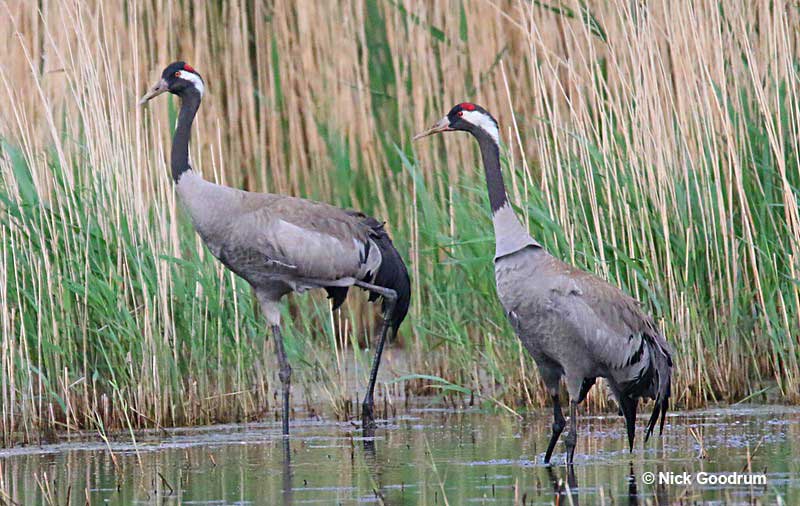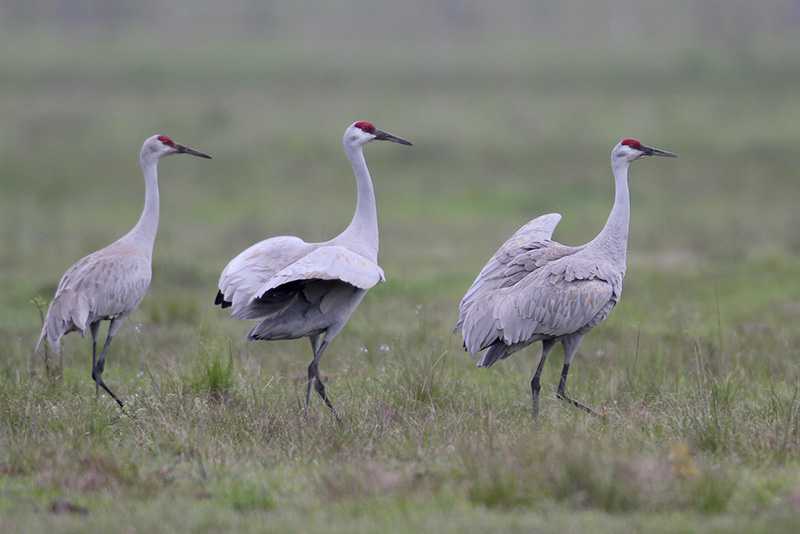
Cranes are large, long-legged and long-necked birds that belong to the family Gruidae, known for their loud, trumpeting calls and elaborate courtship displays, and are found in wetlands, grasslands, and other open habitats around the world. They have long, pointed wings, typically grey or brown feathers, and are known for their graceful and soaring flight patterns.
Two species of cranes are found in the United States – Sandhill Cranes and Whopping Cranes.
Sandhill Cranes
Sandhill Cranes are large birds with long necks and legs, grayish-brown feathers, and a distinctive red patch on their forehead.
They have a loud, trumpeting call and are often seen flying in V-formation during migration. They are found in wetlands, grasslands, and other open habitats throughout North America, and are known for their elaborate courtship displays.
Sandhill Cranes are birds that mate for life. They choose their lifelong partner based on their mating display. When courting, Sandhill Cranes will pump their heads, stretch their wings, jump into the air, and bow.
During the winter and migration, families will group up with other families and nonbreeding birds. This forms loose feeding and roosting flocks. These flocks can have tens of thousands of Sandhill Cranes.
Interestingly, nearly 75% of the Sandhill Crane population can be found along a 75-mile stretch of the Platte River in Nebraska during migration.

Sandhill Cranes are large, mainly gray birds with a red forehead and dark bill. Photograph © Greg Lavaty
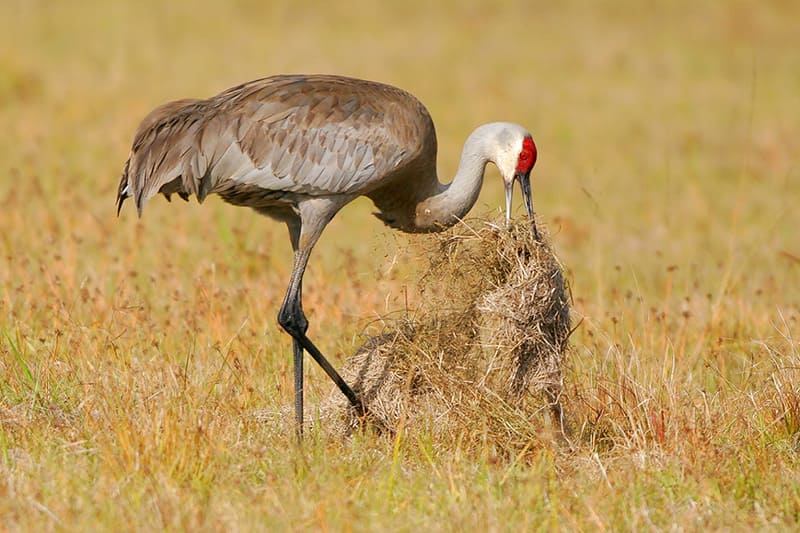
Young Sandhill Cranes and brown with gray head and neck, with the red forehead. Photograph © Greg Lavaty
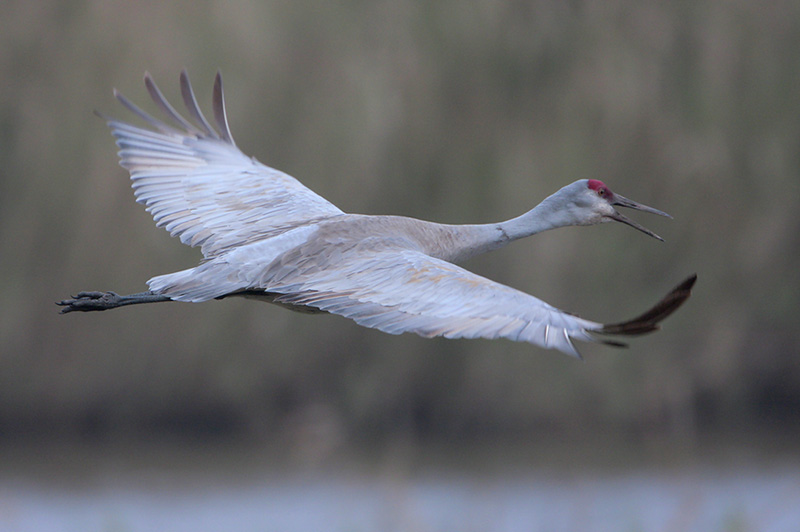
Sandhill Cranes have a short tail and a easily recognized rough, trumpeting call. Photograph © Greg Lavaty
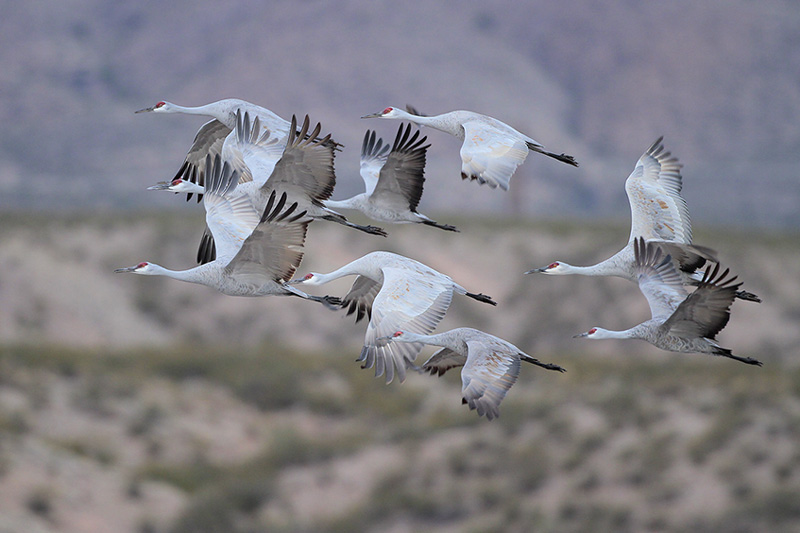
Sandhill Cranes winter in large numbers in places like Bosque del Apache National Wildlife Refuge in New Mexico and are also found in large numbers in Kearney, Nebraska – the self-proclaimed “Sandhill Crane Capital of the World.” Photograph by Greg Lavaty
Sandhill Cranes winter in large numbers in places like Bosque del Apache National Wildlife Refuge in New Mexico and are also found in large numbers in Kearney, Nebraska – the self-proclaimed “Sandhill Crane Capital of the World.” Photograph by Greg Lavaty
Whooping Cranes
The Whooping Crane is a rare and endangered bird in North America. They are known for their distinctive appearance, behavior, and vocalizations.
Whooping Cranes are tall, standing up to 5 feet (1.5 meters) tall, with a wingspan of up to 7.5 feet (2.3 meters). They have a long, pointed bill, a white body with black-tipped wings, and a distinctive red patch on their head. They have a loud, trumpeting call that can be heard from a distance and is often used for communication and courtship displays.
Whooping Cranes are found in wetland and coastal areas in North America, primarily in Canada and the United States. They feed on a variety of foods, including crustaceans, small fish, insects, and plant materials.
Breeding Season
During breeding season, Whooping Cranes perform elaborate courtship displays, including bowing, jumping, and calling. They typically lay one or two eggs per clutch, which are incubated by both parents for about 30 days. The chicks are born with downy feathers and are able to leave the nest and follow their parents shortly after hatching.
Population
Whooping Cranes are one of the rarest birds in North America, with only 660 individuals left in the wild (according to IUCN 50-249 mature individuals). They have faced threats from habitat loss, hunting, and other human activities, and have been the focus of extensive conservation efforts.
These efforts have included captive breeding programs, habitat protection, and other measures aimed at stabilizing and increasing their populations.
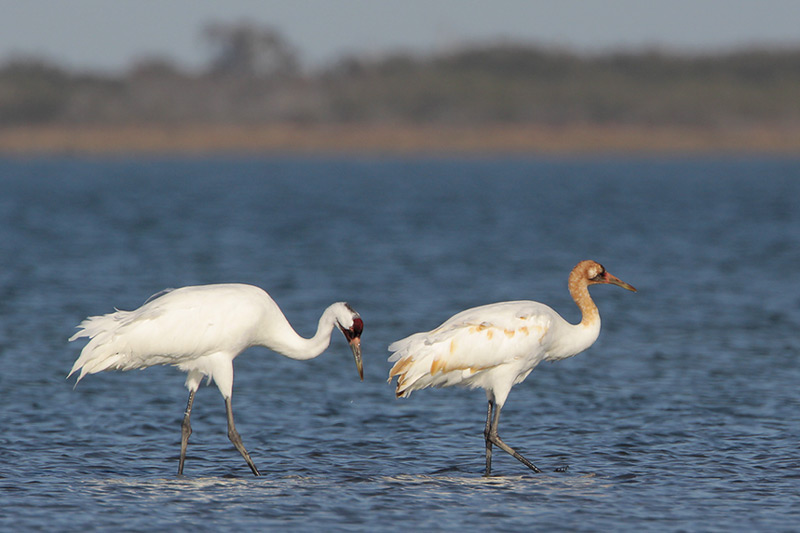
Adult (left) and young Whooping Crane. Photograph by Greg Lavaty
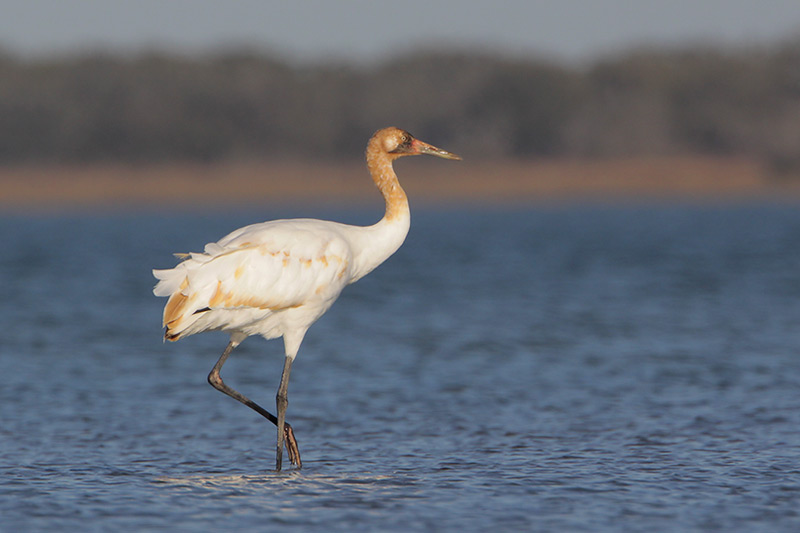
Juvenile Whooping Crane on the Texas Coast. Photograph © Greg Lavaty
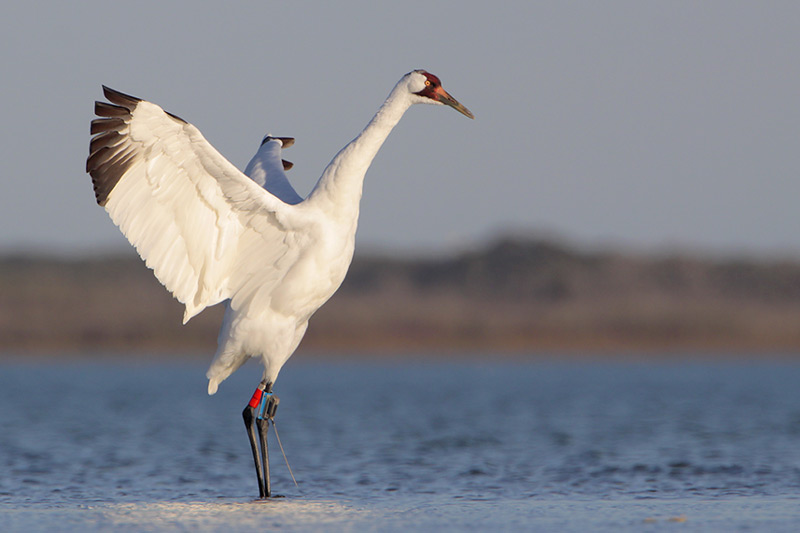
Whooping Cranes are our tallest bird. Adults are all white with black wing tips, a common pattern. Photograph © Greg Lavaty
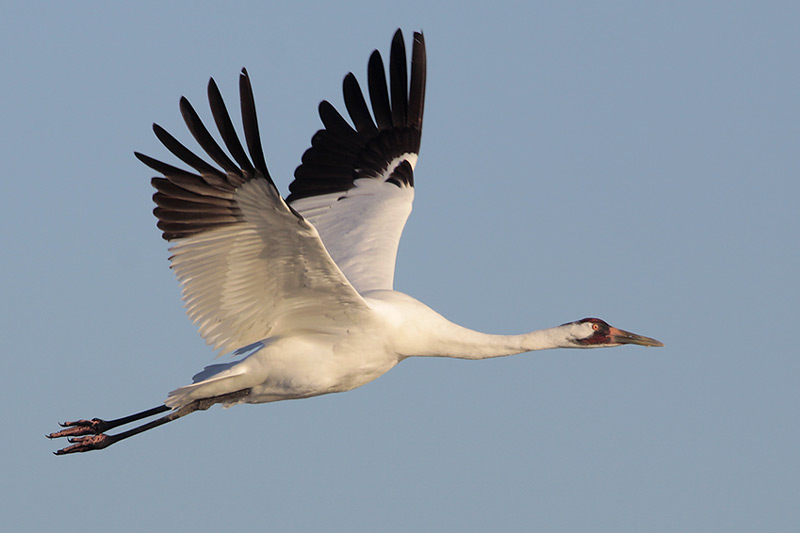
Cranes fly with their neck straight out. Whoopers are about 53 inches tall and have a wing span of 88 inches, Photograph © Greg Lavaty
The Eurasian Counterpart: Eurasian Crane
The Eurasian Crane, also known as the Common Crane, is a large, long-legged bird that belongs to the family Gruidae. They are found across Europe, Asia, and northern Africa, and are known for their distinctive appearance, behavior, and vocalizations.
Eurasian Cranes are typically grayish-brown in color, with a red patch on their forehead and a white cheek patch. They have a long, pointed bill and a long neck that is often held in an S-shape. They have long, pointed wings and a wingspan of up to 8 feet (2.4 meters), which allows them to fly long distances during migration.
Eurasian Cranes are found in a variety of habitats, including wetlands, grasslands, and agricultural fields. They are omnivorous, feeding on a variety of foods, including insects, small mammals, seeds, and roots.
One of the most distinctive features of Eurasian Cranes is their vocalizations. They have a loud, trumpeting call that can be heard from a distance and is often used for communication and courtship displays. During breeding season, they perform elaborate dances and displays, including leaping, bowing, and calling.
Eurasian Cranes are known for their strong social bonds and often mate for life. They typically lay two eggs per clutch, which are incubated by both parents for about 30 days. The chicks are born with downy feathers and are able to leave the nest and follow their parents shortly after hatching.
Despite their widespread distribution, Eurasian Cranes have faced threats from habitat loss and hunting. However, conservation efforts have helped to stabilize their populations in many areas.


